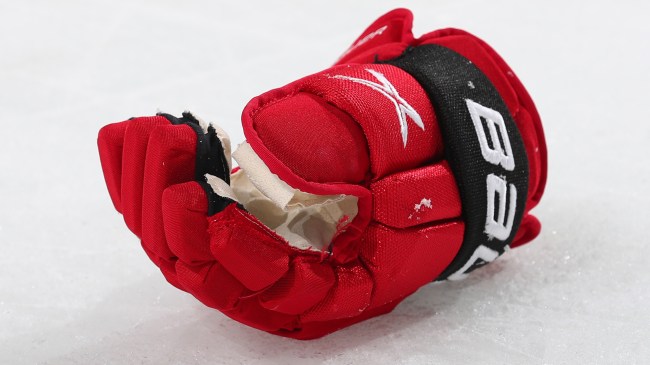
Getty Image
Every sport is governed by plenty of rules that exist for a reason, but as every fan knows all too well, the enforcement (or lack thereof) of those regulations can leave plenty to be desired.
The biggest point of contention obviously stems from moments where the officials blow what appears to be a blatantly obvious call. While leagues have adopted the technology at their disposal to cut down on those oversights, those reviews also have the potential to spawn a fair amount of controversy.
That’s especially true when it comes to the NHL.
In 2015, the league changed its rules to allow coaches to use a challenge if they felt an uncalled offside or goaltender interference violation resulted in an illegal goal. Unfortunately, what seemed to be a good idea in theory has led to countless headaches in practice.
What actually warrants interference in the crease continues to be a hockey mystery that may never truly be solved, and the insane amount of time devoted to taking a closer look at virtually inconsequential offside calls has become a point of contention the NHL has still declined to adequately address.
Now, there’s another thorn in hockey’s side that’s become increasingly impossible to ignore: the hand pass.
Why the NHL needs to fix its broken hand pass rule
Before we dive into things, let’s take a look at the NHL’s definition of a “hand pass.”
The rulebook reads:
79.1 Hand Pass – A player shall be permitted to stop or “bat” a puck in the air with his open hand, or push it along the ice with his hand, and the play shall not be stopped unless, in the opinion of the Referee, he has directed the puck to a teammate, or has allowed his team to gain an advantage
The second half of that sentence is the real point of focus.
There may be no explicit mention of “intent,” but much like a player can score a goal that hit their skate as long as there was no “distinct kicking motion,” they’re permitted to use their hand to move the puck when there is no conscious attempt to gain an advantage on offense or defense.
The spirit of that particular hockey law seems pretty obvious. However, the wording of the rule has repeatedly resulted in the referees adhering to the letter of the law to an almost fanatical degree and making the game objectively worse in the process.
That reality was highlighted thanks to what unfolded in Game 6 of the first-round Stanley Cup Playoff showdown between the Bruins and the Panthers in 2023.
Boston appeared to take a 3-2 lead and gain some much-needed momentum in the second period, but the goal was taken off of the board after a replay determined Jake DeBrusk had supposedly used his hand to pass the puck to Patrice Bergeron in the preceding sequence even though he appeared to simply graze it while attempting to pick up his stick.
what a league. this is considered a handpass and takes a goal off the board. pic.twitter.com/LG0yyb5IIS
— Spoked Z (@SpokedZ) April 29, 2023
It’s a stretch to even suggest DeBrusk was aware Bergeron was in the area at the time when you take a look at the replay, but the mere fact that his hand touched his glove was all the refs needed to overturn the goal.
That may be the most egregious example in recent memory, but it’s far from the only one.
In 2022, the Maple Leafs befell a similar fate after scoring what appeared to be a game-tying goal only for the refs to determine Morgan Rielly had committed a violation by batting down the puck during a scrum that led to his teammate taking possession, although it’s difficult to argue it could’ve been defined as a “pass.”
There are also multiple instances where a hand pass has been called on a faceoff even when a player had both hands on his stick, which was a factor in a disallowed goal the Lightning had scored in the playoffs in 2022.
The solution to this issue seems like a fairly simple one.
There are certainly situations where allowing referees to use their discretion can cause more problems than it ends up solving (as evidenced by the NFL’s pass interference review debacle), but stressing intent as opposed to simply overturning a call because a player’s glove made contact with the puck in the vicinity of someone on his team would be an incredibly welcome change.
Here’s to hoping the NHL realizes that’s the case sooner rather than later.